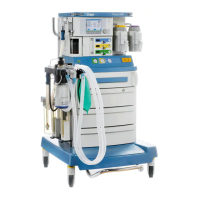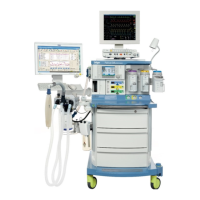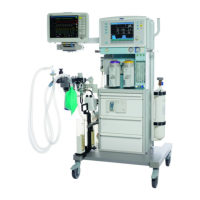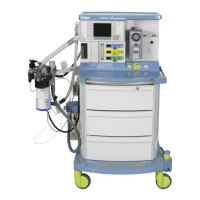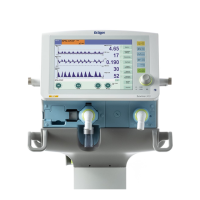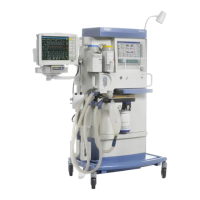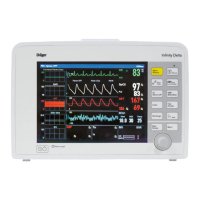Instructions for use Fabius Tiro SW 3.n 201
Technical data
Electromagnetic emissions
When using wireless networking, be aware that the
system operates at 2.4 GHz range. Other
equipment, even if compliant with CISPR emission
requirements, can interfere with reception of
wireless data. When selecting wireless systems
(wireless communication media, pager systems,
etc.) for use in installations where wireless
networking is used, care must always be used to
ensure that operating frequencies are compatible.
For example, selecting wireless communication
media that operate at 2.4 GHz will likely cause
difficulty with the networking components. Low-
level signals such as ECG signals are particular
susceptible to interference from electromagnetic
energy. Even if the equipment meets the test
requirements described below, smooth operation
cannot be guaranteed – the ‘quieter‘ the electrical
environment the better. In general, increasing the
distance between electrical devices decreases the
likelihood of interference.
Detailed radio frequency characteristics
Communication devices in accordance with
IEEE 802.11b:
– 2412 to 2472 MHz
– DSSS (direct-sequence spread spectrum)
limited to 100 mW
– Applicable to access points and client adapters
Communication devices in accordance with
IEEE 802.15.1:
– 2400 to 2485 MHz
– FHSS (frequency-hopping spread spectrum)
limited to 2.5 mW
See the instructions for use of the wireless devices
for further details.
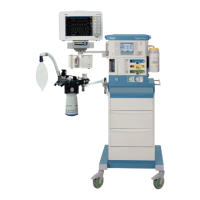
